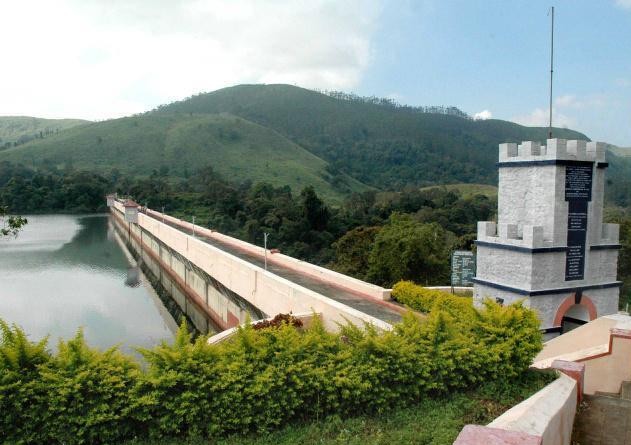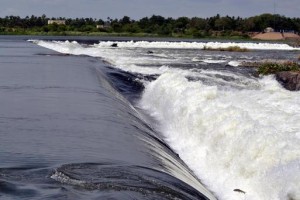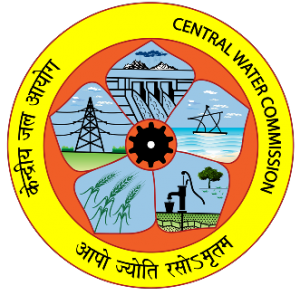In this blog post, Sreeraj K.V, a student of Government Law College, Ernakulam, Kerala writes about the interstate water disputes in India. The post covers major areas of water dispute and its related aspects, legal recourse and also an analysis of the current river water disputes in India.
India is very rich in terms of the number of rivers and water bodies flowing across the country. But the fact remains that many of the water bodies are now being polluted in one way or the other by the people as well as many other industries which have been set up on the banks of such rivers.[1]Hence, only a limited number of water bodies are now being used for meeting the requirements of the public both by the Central and state Governments. Such rivers include Krishna, Kaveri, Godavari, Periyar, etc. majorly. One of the major facts regarding such rivers is that they flow not only through one single state or region but through a number of states. Gradually there arise various disputes in connection with the usage of such rivers between the states in which the river flows. The disputes arise regarding quantity of water consumed by the state.
A very recent example of such interstate water dispute can be traced to the Yamuna river water dispute between Delhi, Haryana and Uttar Pradesh. The dispute was resolved through many conferences among the Chief Ministers of the three States as well as the Central Government.[2] But not all the water disputes have been resolved effectively. Kaveri river water dispute among Karnataka and Tamil Nadu still continues as a persistent issue. Many of the water disputes are still going on due to the lack of friendly relationship among the state Governments and due to a common principle “Harmon Doctrine” which means whatever which falls on our roof is ours.
There are many laws and statutes which regulate the usage of water and also ensure the prevention of disputes regarding water. We have Interstate Water Disputes Act, 1956 as one of the major enactments among them. The Act defines the meaning of the term ‘water dispute’ as difference or dispute between two or more State Governments with respect to:
- The use, distribution or control of the water of, or in, any inter-state river water or river valley; or
- The interpretation of the terms of any agreement relating to the use, distribution or control of such waters or the implementation of such agreement or
- The levy of any water rate in contravention to the prohibition contained in section 7 of the Act.[3]
Section 7 of the Act states talks the prohibition of levy of seigniorage, etc.
(2) Any dispute or difference between two or more State Governments on the levy of any water rate in contravention shall be deemed to be a water dispute. [4]
Looking into the Constitution of India, there are certain provisions in connection to India’s Federal water institutions, which include
- Entry 17 in the State list
- Entry 56 in the Union list
- Article 262
Entry 17 makes water a state subject and Entry 56 states that “Regulation and development of interstate rivers and river valleys to the extent to which such regulation and development under the control of the Union are declared by Parliament by law to be expedient in the public interest.” Article 262 grants Parliament the right to legislate over the matters in Entry 56 and also gives it primacy over the Supreme Court.[5] There were proposals for various river authorities but were not legislated or established with their vested powers of management. River boards with only advisory powers have been created.
The matter concerning Mullaperiyar Dam issue is one of the main disputes regarding the river water among the two states of Kerala and Tamil Nadu. The dispute took place in connection with the increase of strength as well as additional spilling capacity of the dam which was constructed between 1887 and 1895. Various meetings with the Chief Ministers of two states along with various Ministers in the Central Government, mainly Prime Minister as well as Minister for Water Resources. The Central Water Commission was also formulated to look after various contentions of the two state governments regarding the maintenance and protection of the dam.
Various cases were filed by both the state governments in connection with the dispute and also various laws were enacted by both the governments for the protection or enforcement of their rights on the dam. The Supreme Court intervened in this matter in such a way that the court provided some guideline regarding the meeting among the Chief Ministers of the two states and also in appointing a separate team for inspection on the safety and possible measures that must be adopted for resolving the dispute between the two governments. Still, the dispute has not been settled under any of the state government initiatives.
Guidelines under the Act
For resolving the issues on interstate water disputes in India, chapter VI of the Inter-state Water Disputes Act provides various guidelines that are to be followed by the state governments as well as concerned authorities, which include:
-
Negotiation
Possible steps for negotiation as well as mediation have to be adopted by both the state governments for resolving such issues affecting river water dispute.
-
National Water Policy and National Water Grid
To resolve interstate water dispute in India, other than the method of negotiation, mediation, and conciliation proceedings, the Act also states that no solution will be available for the concerned parties unless there is an implementation of National Water Policy or a National water grid. These policies can make certain awareness regarding the importance and need for conservation of water as a precious resource rather than having a dispute over them and over-exploiting them.
-
Water administration
The Act also states that without proper management and administration of water and its related matters, no solution regarding water dispute would be available. Water administration includes implementation of certain authorities and committees for looking after the matters concerning usage and distribution of water from rivers and other water bodies. There are some bodies working on this basis, for example, Bhakra Management Board, Beas Construction Board, etc.[6]
Central Water Commission
The commission was constituted in 1945. From its inception itself, it has been working as an apex organization for the promotion of various measures for controlling, regulating and for optimizing the usage of water resources for irrigation purposes, water power generation, flood control, and protection measures. It also plays an inevitable role in resolving water disputes among two or more state governments (example: Mullaperiyar dam issue). It also provides various guidelines to the state governments and its concerned authorities regarding various inspections and surveys regarding the protection and development of rivers, river valleys, and other such water bodies.
Conclusion
While concluding, it is important to note that the main issue that our future generation will be facing is the scarcity of fresh water for meeting their necessities. Experts have stated that if there is a third World War, it will be due to water. Thus, people must be very conscious about this matter when utilizing water for various purposes. Various state governments, as well as the Central Government, must see to the matter in a much more serious way so that there arises no dispute among them in connection with inter-state rivers and the rights of such state governments on the utilization of water from those rivers. Keeping in mind the current availability of fresh water in India, Government can implement various alternative remedial measures for the optimum utilization of water resources and for making certain amendments in the Act so that there will not be an interstate water dispute in our country.
Footnotes:
[1] Retrieved on: http://www.conserve-energy-future.com/sources-and-causes-of-water-pollution.php
[2] Retrieved on: http://assets.wwfindia.org/downloads/interstate_water_disputes_in_india_2.pdf
[3] Retrieved on: http://wrmin.nic.in/forms/list.aspx?lid=366
[4] Retrieved on: https://indiankanoon.org/doc/1779366/
[5]Retrieved on: http://assets.wwfindia.org/downloads/interstate_water_disputes_in_india_2.pdf
[6] Retrieved on: http://shodhganga.inflibnet.ac.in:8080/jspui/bitstream/10603/65929/13/13_chapter%206.pdf















